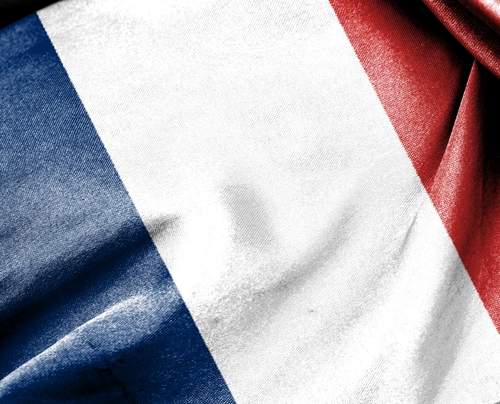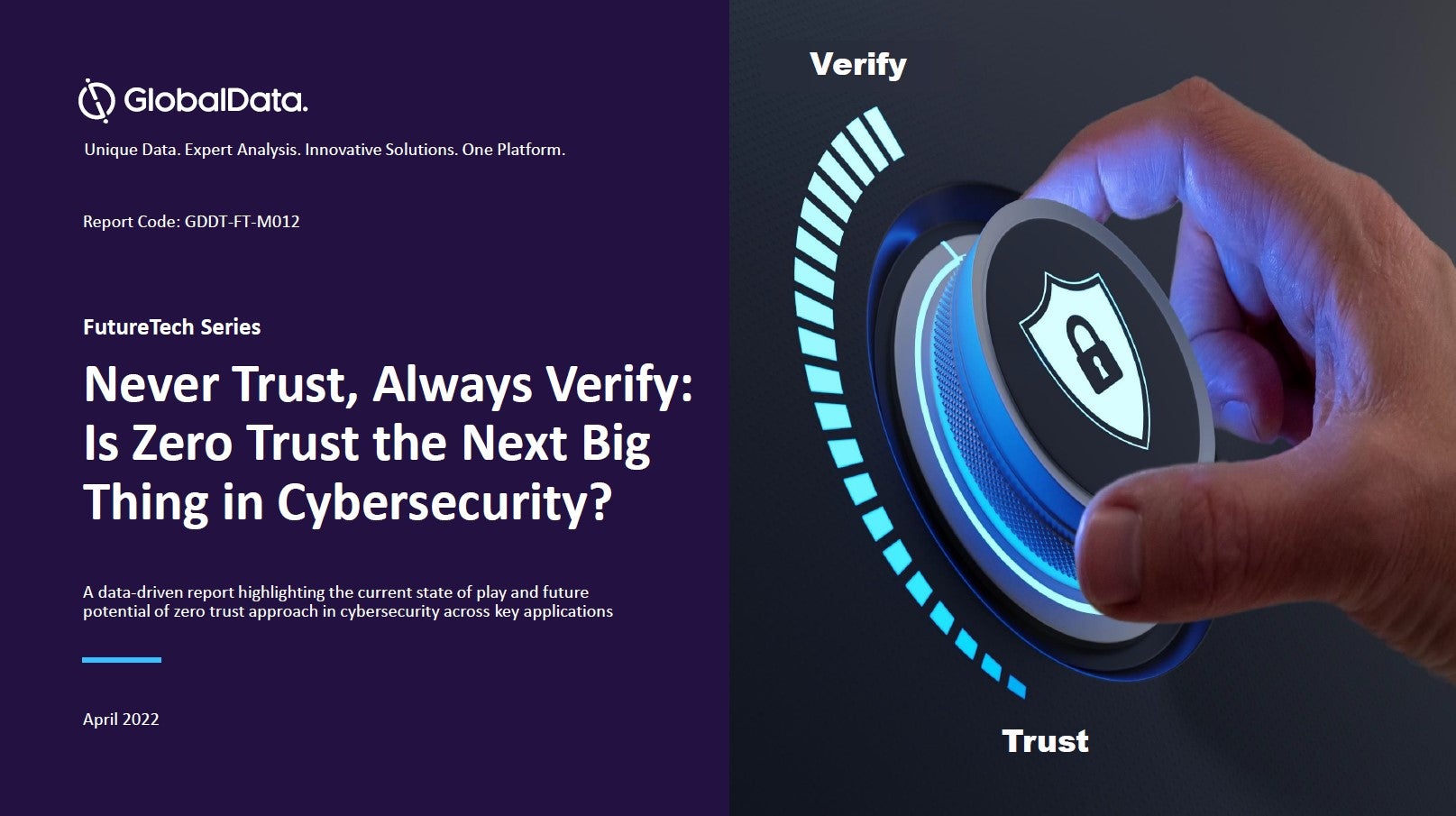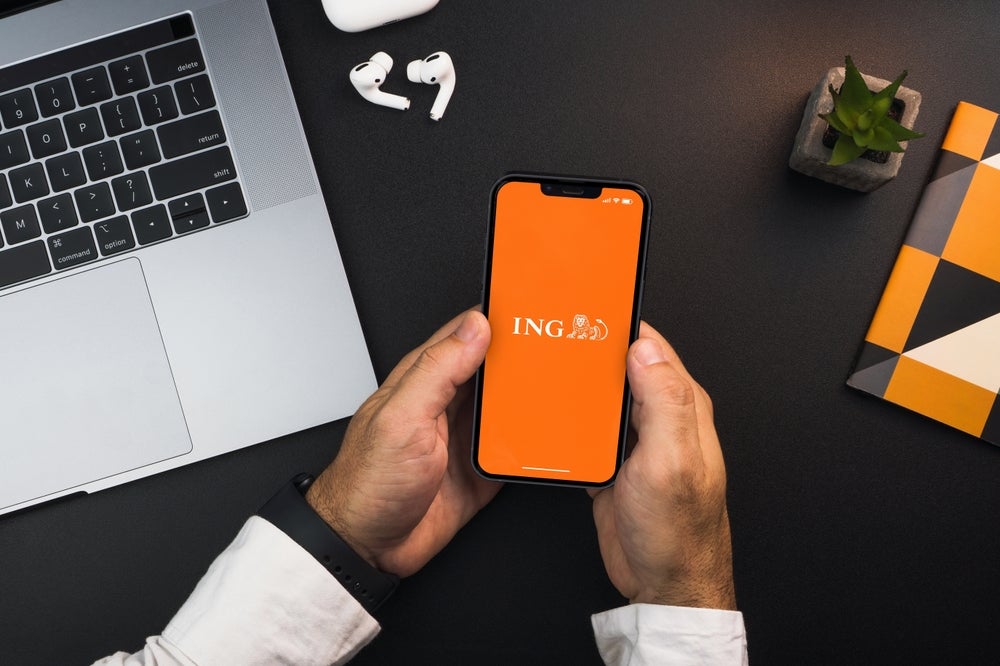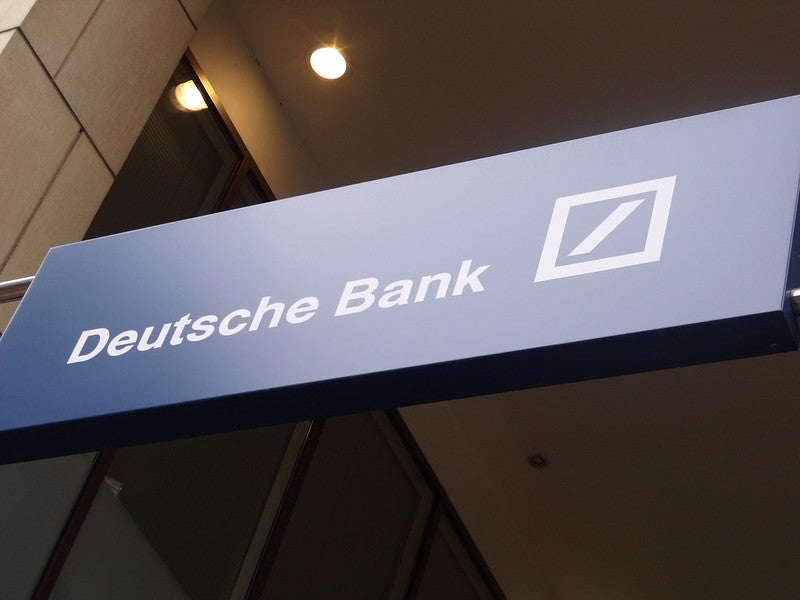
French banks are engaged in an innovation race with millions of euros invested each year in an attempt to differentiate themselves. Elsa Buchanan discusses how the drive to innovate has led banks to develop Apple Store-like platforms and create the biggest IT network in Europe, while coping with increased regulation
As in many developed countries, lack of trust, aggressive regulations and revenue shortfalls left French retail banks battling against flat or even negative growth after the 2007-2008 global banking crisis.
France’s retail banking industry was not spared by the crisis but, as Standard & Poor’s Credit analyst Elisabeth Grandin tells RBI:
"Thanks to diversified earnings streams and sound domestic activities, French banks bore the costs themselves, essentially through reduced dividends, unlike banking industries in most countries hit by the crisis."
Public opinion agrees with Grandin, with last year 64% of the French public believing that its banking model weathered the crisis better than banks in other countries, up from 60% in 2011.
The French are considered to be one the biggest consumers of banking services in the world. Indeed, 99% of the country population over the age of 18 holds a bank account, while financial services account for more than 0.66% of households’ budget, according to the National Institute for Statistics and Economic (INSEE).
How well do you really know your competitors?
Access the most comprehensive Company Profiles on the market, powered by GlobalData. Save hours of research. Gain competitive edge.

Thank you!
Your download email will arrive shortly
Not ready to buy yet? Download a free sample
We are confident about the unique quality of our Company Profiles. However, we want you to make the most beneficial decision for your business, so we offer a free sample that you can download by submitting the below form
By GlobalDataIncreasingly, since the crisis gathered pace in 2008, French banks have sought to ramp up their digital banking investment.
"The evolution of digital banking has been very interesting here," says Virginie Fauvel, head of digital banking at BNP Paribas in France and domestic markets such as Germany, Luxemburg and Belgium. "The use of digital media has really increased the relationship between our customers and our bank," she explains.

Local branches: "a delicate subject"
While a division exists between ‘Northern’ countries such as the UK and ‘Latin’ countries such as Spain, who rely on a slim (9,550 branches) and an extended network (43,000 branches) respectively, France is seen as the One in the Middle.
With around 38,000 local branches in France, or 586 per 1 million inhabitants -including the national Post Office’s bank (La Banque Postale)- the banking network is dense, according to data compiled by the European Central Bank in October 2012.
But these numbers are changing: most retail bankers anticipate a decrease, yet "closing down" trends have not been publicly discussed.
"It is a delicate subject," concedes SociÈtÈ GÈnÈrale’ (SocGen) Erik Songeur, head of multichannel distribution at SocGen.
He says bankers are witnessing a boom in the "number of contacts" made between customers and banks, but explains there is a shift from ‘"physical" contacts (pushing the bank’s door) to non-physical ones: 80% of all contacts in 2013 are made via digital channels, while 10% are over the phone, leaving a meagre 10% made at local branches.
For now, he says, SociÈtÈ GÈnÈrale stands out among the retail banking crowd, because the number of its agencies has been growing 1% every year on average, bringing the number of local branches to around 2,300.
"The evolution is linked to that change in contact between customers and banks," Songeur explains.
"We can clearly see more digital contacts done through secured emails sent directly to the advisor located in his local branch so these [customers] are not going through their local branch anymore, yet other customers still stay close to their branch."
"It is true all these elements are leading us to rethink [branch network] strategies, but for now, we can not really speak about that," adds Songeur.
"Nonetheless, it is a mental reflection most bankers have."

Virginie Fauvel, BNP Paribas
By contrast to SocGen, Credit Mutuel-CIC’s group president Michel Lucas says the bank closed 67 branches between the end of 2001 and 2009 bringing their number down to 5,831, but has witnessed a pick up thereafter with more than 80 branch openings each year, resulting in a 4% to 5% increase in the number of "face to face conversations between customers and advisors".
Head of regional banks division at CrÈdit Agricole, the largest retail banking group in the country, Olivier Gavalda oversees the 7,000 branches operating nationally and, although he says the number of branches operating is relatively stable – but slightly on the decrease- he insists the bank has "no desire" to reduce the size of its network.
This train of thought is also shared by BNP Paribas’s Virginie Fauvel who agrees the retail banking industry is undergoing huge changes, but adds: "I am not sure whether the increase of digital and the decrease of branch visits has a direct link."
President of Credit Mutuel group, Michel Lucas argues that: "We have come to realise that our digital bank’s penetration rate is only positive where we have already implanted local branches."
Mobile opportunities
Athough there is no consensus about how digital banking impacts upon banks’ networks, all agree that opportunities for digital banking are plentiful.
France ranks second behind the Netherlands within the EU in terms of internet banking penetration with 6 in 10 French internet users visiting online banking websites (see table).
Among Europe’s largest banking groups, three of the top 10 banking websites as ranked by unique visitors are headquartered in France with Credit Agricole ranking second ahead of SocGen (7th) and BNP Paribas in 9th place (see table).
While the internet remains one of French customers’ favourite banking options (19 % of web users had already subscribed to a banking product on the web in 2011, up from 13% in 2008 according to a 2012 study by consultancy Benchmark Group) banks have been competing to create, develop and launch the latest mobile or tablet application (apps) for the extensively growing mobile population.
SocGen’s Erik Songeur explains that although fixed-internet connexions are "calmer now," he believes the number of web visits have increased and will increase over the years, due to mobile use. And Songeur can rejoice: according to the French electronic and media regulator, the Conseil SupÈrieur de l’Audiovisuel (CSA), out of 100 clients at SociÈtÈ GÈnÈrale, 71% have visited the bank’s website.
But, for the first time, the bank made more contacts via mobile and tablet (23.2 million) than online (19.2 million), declares Songeur. "We are the only ones on the market to witness that," he adds.
In a country where the mobile penetration rate exceeds 105%, with 66 million subscribers (for a population of just over 65.6 million in 2012), it comes as no surprise that banks say mobile solutions are by far the most popular.
CrÈdit Agricole SA’s Galvalda says the most successful addition to the bank’s network was launched three years ago, just a few months after the break from traditional banking.
The app, called ‘Mon Budget’ (My budget), allows customers to manage their personal bank account and their budget and was downloaded 1 million times.
"On Boxing day last year, we had 15,000 downloads of the app. All in one day," says Gavalda . He argues that banking apps answer a real need, and when customers received a smartphone for Christmas, most of them visited app stores and downloaded the app.
Galvalda adds: "10% of all customers use the app as a mobile banking solution", especially because of the "click-to-talk" option offered on the free app.
He says that the service, which enables customers to arrange a meeting and speak with their advisor through videoconference, was a way to differentiate the bank from others, as many had chosen to concentrate on the ‘click-to-mail’ option.
But, while other banks prioritise the mailing service option, CrÈdit Agricole does not yet offer that service; Gavalda confirms it will be offered by end-2014.
"But the ‘click-to-talk’ is all the same more ambitious," he adds, explaining more innovations are waiting to be formalised.
The possibility to play on the stock exchange is not yet included in the ‘Mon Budget’ app, but Gavalda hinted at the possibility that the option could soon see the day of light.
At SocGen, more than one in four clients connected to the bank’s site via mobile in 2012, up from 14% in 2011, with Songeur declaring "without hesitation, our app is our biggest digital success."
Indeed, the biggest increase was recorded after a "mobile break" was made in October 2011 when mobile connections climbed from 4 million to 23 million in just 14 months.
"During this time," Songeur says, "mobile users have increased by 50%, and daily connection numbers [have] exploded", thanks to the bank’s mobile app, named ‘L’appli’ (The app).
He explains what, in his opinion, diversifies his product from others’: the app has a ‘gauge’ indicating customers’ finance situation, and they can access it directly, without any authentication.
Separately, the hunt for innovation has led the bank to create functionalities for bind people on iPhone and Ipad, using ‘voice over’, a voice system already integrated within the phone.
Finally, Fauvel from BNP Paribas also notes a huge change in mobile use, saying more than 700,000 unique users visit the mobile site, while the bank’s iPhone, Blackberry and Android apps "Mes comptes" (My accounts) were downloaded 2 million times since their launch.
"More, 10% of all bank transfers are conducted from a mobile each month. It’s a lot," she explains while adding BNP Paribas was the first French bank to offer a service on the iPad. The bank launched its tablet-specific app in May 2010, the day the iPad was launched in France.
"Proof of the bank’s success 200,000 downloads by December 2012 of our new iPad apps launched in November 2012," points out Fauvel, who adds:
"We believe that the tablet will change the relationship with the customer and with desktop computers."
Call-centres, "a very effective channel"
While mobile banking metrics soar, banks are also witnessing another trend.
SocGen’s Songeur explains that phone contacts are "taking a bigger relationship value than ever before", while customers expect more sophistication from call centres.
"People need immediate answers," Songeur explains, before adding SocGen has been witnessing this trend for two years.
"The ‘Direct Agency’ – no physical address, no door – is a pure product of the multi-channel strategy: besides digital channels, we see a sustained usage rate of phone calls and emails."
He explains that things have evolved because of increased digital opportunities where "previous calls are not needed any more"; but Songeur says people still need "to be reassured."
Young customers want to make sure they have not made a mistake on a financial transaction on their account, while older customers want to know they have not hit the wrong key or mistyped something, he explains.
Songeur says that SocGen still operates its four call-centres, and although the number has not changed, their commercial activity has.
"Someone who starts subscribing to an insurance product might start it online, but then needs to call up to be reassured," he adds, "Over the phone, the subscription finalising rate is 50% – it is a very effective channel."
CrÈdit Agricole ‘s Gavalda hints at a change in most banks.
"Call centres are more specialised now, because it answers clients’ needs, but also because it is more cost-effective."
According to Gavalda, local branches and call-centres’ structures are changing despite their numbers remaining stable for the moment.
"Low-added value skills are disappearing as employees are taught "multi-channel management."
At BNP Paribas, the same story is repeated: call centre employees are trained to answer digital media queries or follow trends, explains Fauvel.
"They are trained to answer via Twitter in 140 characters with a particular style, different from how they operate when answering questions via chats or on Facebook."
But what is somewhat surprising is that although the number of call centres is decreasing, "we are creating new jobs," she explains, adding:
"We hire new people but we also do in-house training directed to older employees." Training comes in the form of a dedicated document filled with "all the new elements on Google+ and all the new trending topics on Twitter."
"Employees need to be and are more knowledgeable on these topics. It is a big change for us, and a new job for bankers… bankers that are good at social media" she adds.
A real technological rivalry
The need for innovation is clear in this tight and competitive market, as CrÈdit Agricole proved when it received the Finovate award for its ‘CrÈdit Agricole Store’ (CA store) launched in October 2012, says Gavalda.
The CA store, resembling the likes of Apple Store or Google Play, is the first European one to be offered by a bank, and for which financial and banking apps are co-created directly between clients and developers.
With over 100,000 site visits per month in the first three months, 18 mobile apps created and 22 new service ideas generated,Gavalda explains that the store has already provided social apps, full display of account information apps or apps for visually impaired customers.
Developers have provided "on-demand" apps with and for clients, as well as models and bank data protection behind them.
"I think this is the future," states Gavalda who believes banks will and should also be "able to export and work on banking data in a protected manner to meet all customers’ needs and wishes."
BNP Paribas is not expected to come up with its own version of the ‘banking app store’, but the bank has decided to focus other innovations making their first steps in the Hexagone: the touch-less and peer-to-peer payments.
The bank partnered with Orange, the telecom giant, to create the peer-to-peer solution called ‘Mes transfers’ (My transfers), which enables customers to transfer money to anybody in France for free with a mobile number, as well as a touch-less solution with the use of microSD (MSD) fitted credit cards.
The partnership was signed in November 2011 in what Fauvel called a "share of skills", namely that Orange "shares its telephony skills while [the bank] shares its banking skills".
She explains: "In France, the contactless payment eco-system is changing and today, all our credit cards issued are contactless."
"I believe that contactless payments are going to be key in France," she says, but points out:
"It takes time to change markets after you have launched a strategy, and in France it is going to take time for people to accept."
CrÈdit Agricole’s Gavalda concurs
"The payment world is in full swing," The bank is also equipping all its new credit cards with the contactless system, but Gavalda takes a more downbeat view when he talks about the peer-to-peer technology partnership.
"We do not intend to do the same thing [as BNP Paribas]," he says, "There is no desire to partner with a large mobile operator."
The bank launched an ‘interbank wallet’ called Kwixo in June 2011, which is considered to be a indirect competitor to BNP Paribas and Orange’s peer-to-peer solution, but Gavalda explains:
"It is a success when I compare the results with other experiences [we have had] but the number of users is below our expectations and we have not yet witnessed an instant hit."
According to Gavalda, it is still difficult to pin down which of these "new technologies or payment methods" will standout.
"They all answer customers’ needs for simpler and faster transaction and that is why we did it, because there is a real added-value to it," he says.
"But for now I am quite sceptical."
Multi-channel integration
If Gavalda does not believe that either the peer-to-peer or contact-less payment methods will be an immediate, runaway success, he has no doubts that CrÈdit Agricole’s biggest project to date will be a huge hit.
As part of the banks’ "multi-channel integration", CrÈdit Agricole is investing Ä500m million, spread on four years for the banks’ new integrated IT system, named ‘NICE’, which will bring together all five existing IT systems currently running.
"It will be the biggest and largest IT system in Europe according to IBM," states Gavalda.
The bank forecasts a saving of more than Ä250m every year on IT expenses, while the new system is expected to sustain the bank’s ‘cross-channel’ programme.
In line with the trend to set up ‘multi-channel’ platforms, which is the fact of offering banking possibilities on a separate level, Galvalda explains that ‘cross-channelling’ is to integrate all those platforms into one.
Indeed, Gavalda says, the new system will enable customers and advisors to share the same computer screens, and use what he describes as "interruptible processes".
For example, he explains, the customer will be able to start subscribing to a product, and then stop the application process because he needs help. The advisor will be able to continue the process where the customer has left it the previous day.
"What is different compared to other banks, is that our branches are multi-channel and that our advisors are at the centre of all cross-channel platforms," he explains, adding:
"What we want is a ‘multi-channel advisor’, who will be available at all times via email, video or online to speak to his customer, and will physically seem not very far from home."
In March, and ahead of the launch of the cross-channel integration system, Gavalda says the bank has started distributing a total of 50,000 tablets to its advisors.
By the end of 2013, he explains, the tablets should already allow the bank to reduce its paper consumption by 60% or 70%, while keeping local branches "connected".
"The idea is to completely remove the use of paper," he says, "as removing signatures will enables us to become the ‘zero paper’ bank we wish to be, with at its centre, the advisor."
Broken email links
But while bankers rejoice from their digital successes, many challenges still remain.
A study of France’s 10 biggest retail banks (including BNP Paribas, CrÈdit Agricole, SocGen, Caisse d’Epargne, Banque Populaire, HSBC, AXA Banque CIC and LCL), for the 2012 "Etude Multi-Canal" (multi-channel study) by European software vendor Eptica shows that only 60% of retail banks offered email contact customer service on their website, outside secured client spaces.
According to the study, once contacted via email, only 40% of banks sent an email to acknowledge receipt of the email, while one bank indicated an answer would be sent in 48 hours.
Only 30% of banks respond to requests by email, a figure not only low but also declining since 2011, when 60% answered questions by email, according to Eptica.
In addition, treatment of emails was shown as very uneven between different banks and should be improved, both in terms of response times than their quality, says Eptica.
Response times varied between 2 and 2.5 days; and the study noted that only 20% of emails provided answers relevant enough to answer questions.
Eptica’s research also shows that only 40% of banks studied had linked their Twitter and Facebook sites to their own, going as far as describing French retail banks as "poorly connected".
And while retail banks should take the time to improve residual structural issues, they have to brace against a new period of slugging economic growth: despite its high rankings (France is the fifth largest economy in the world and the second largest in the euro area) the country’s gross domestic product (GDP) contracted 0.30% in the fourth quarter of 2012 over the previous quarter.
However, in recent years, the country has also been losing competitiveness and capacity to attract private investment due to rigid labour laws, high taxes and social contributions along with a new period of regulatory reforms that "looks certain to substantially affect revenues, profits, and margins, and perhaps alter the time-honoured ways that these institutions conduct their business" according to consultancy McKinsey’s July 2012 report ‘Day of reckoning for European retail banking’.
In France, the report says, return on equity for mortgages is set to to 4% from 6%, while renegotiation of mortgages and the loss of switching revenues (as customers will now be allowed to switch banks without paying penalty fees) will lower revenues, says the report.
Separately, retail banks are also set to suffer a loss on their return on equity (from 14% to 10 % yields) driven by changes affecting mortgages, debit cards and investments, due to new regulations. These include Basel III – with its rules implemented through the Capital Requirements Directives (CDR II, III and IV)- as well as European regulation such as the EU Directive on Credit Agreements Relating to Residential Property, or the EU framework for bank recovery and resolution.
France’s own regulation could impact on retail-banking profitability.
Standard and Poor’s Elizabeth Grandin explains: "French banks will continue to operate in somewhat difficult and constraining environment featuring low domestic economic growth, uncertainties in the Euro zone capital markets, and stricter regulatory rules in the run-up to Basel III."
While banks are also threatened by capital flight from France (actor Gerard Depardieu is the latest to exit the country, causing a good deal of commotion), Grandin says: "Nevertheless, most of our outlook on the French banks we rate is stable because we believe that they will likely retain their credit strength."








